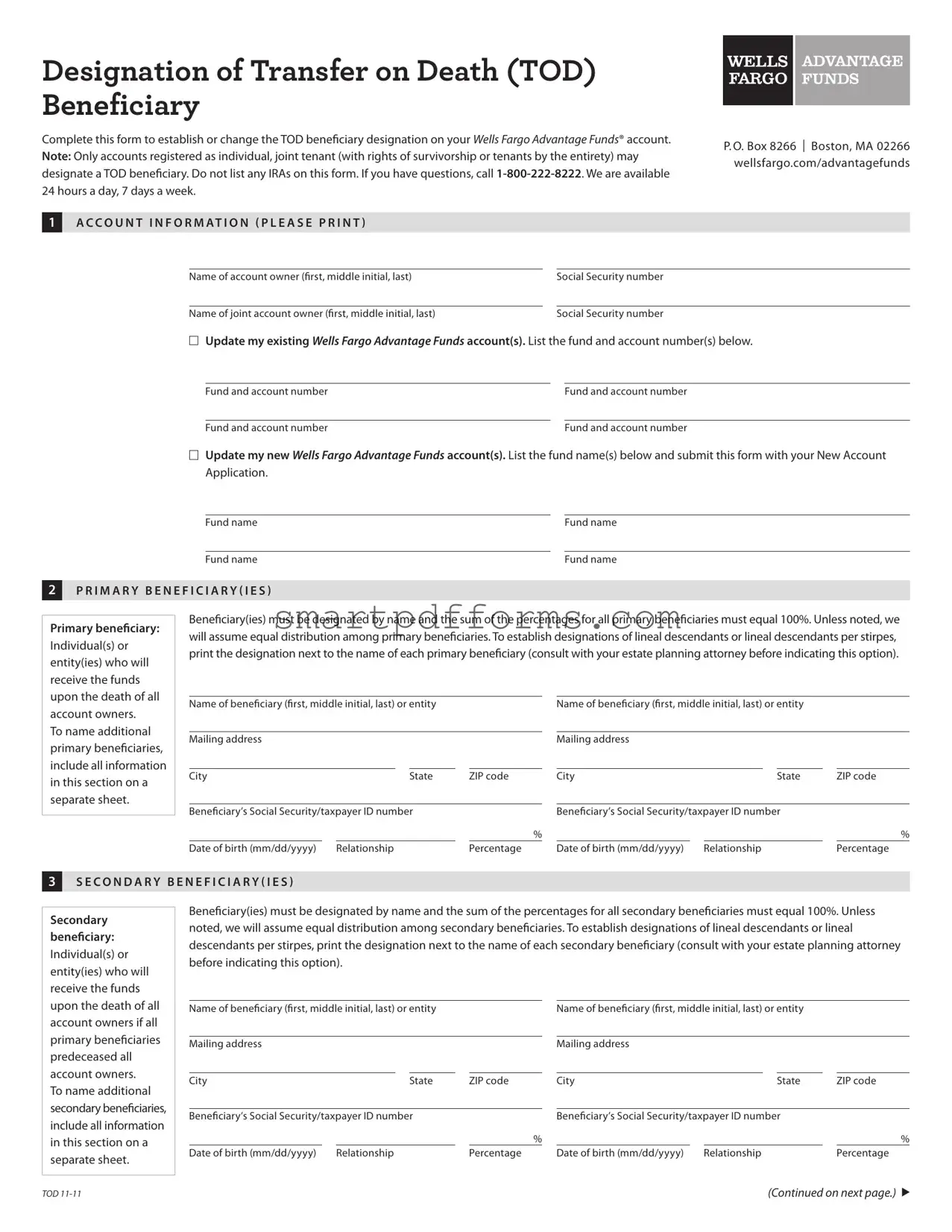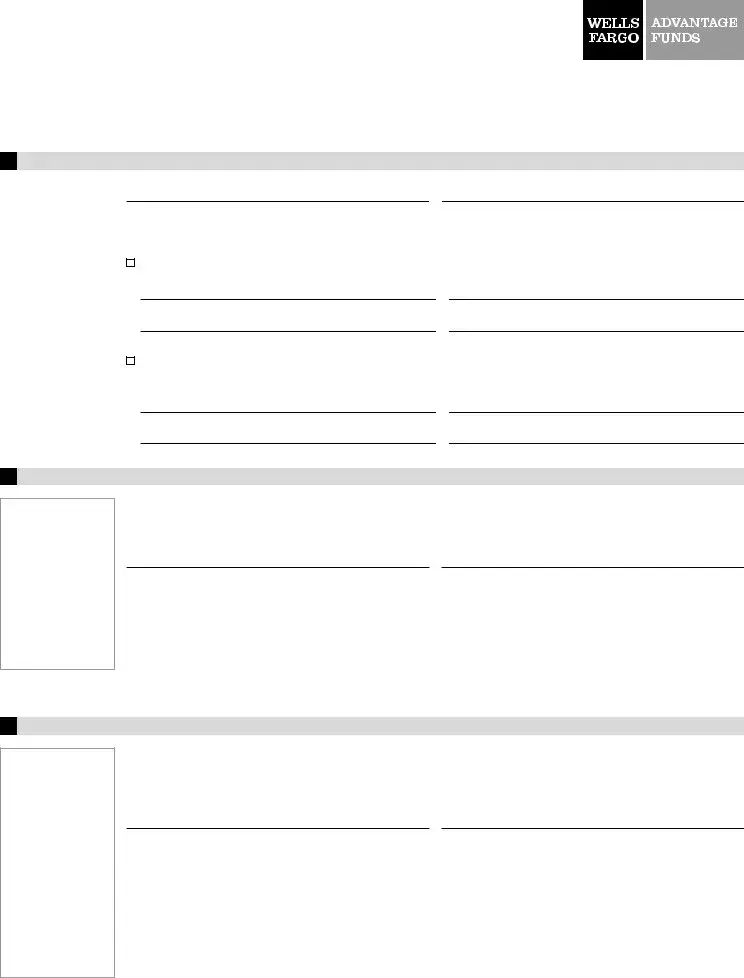All account owners must sign and date this form
to complete this request.
I understand that this TOD beneficiary designation shall replace any previous TOD beneficiary designation(s) I have made for the Wells Fargo Advantage Funds accounts listed in section 1 of this form. I acknowledge that this designation is effective upon receipt in good order by the fund’s transfer agent and will remain in effect until I deliver written notice of a change or revocation of beneficiary(ies) to the fund’s transfer agent. I agree to be bound by the Boston Financial Data Services (BFDS) TOD Rules, which BFDS may amend from time to time or may be altered, modified, or supplemented by Wells Fargo Advantage Funds. I further understand that Wells Fargo Advantage Funds reserves the right, at any time without prior notice, to suspend, limit, modify, or terminate the TOD registration.
I, my successors and assigns, do hereby agree to indemnify and hold harmless Wells Fargo Advantage Funds, Wells Fargo Funds Management, LLC, their affiliates, and subcontractors—as well as the officers, directors, employees, and agents of these entities—from and against any and all liabilities, claims, losses, and expenses (including reasonable attorneys’ fees) arising out of or in connection with the transfer upon my death of the balance in the account(s) referenced in section 1 to the beneficiary(ies) listed on this form.
7
Signature of account ownerPrint nameDate
7
Signature of joint account owner |
Print name |
Date |
5T R A N S F E R O N D E AT H ( T O D ) L I M I TAT I O N S A N D M O D I F I C AT I O N S
TOD registrations are governed by the fund’s transfer agent, BFDS TOD Rules, except as altered, modified, or supplemented by Wells Fargo Advantage Funds. The phrase “Subject to BFDS TOD Rules” in an account registration shall incorporate the modifications adopted by Wells Fargo Advantage Funds. The following guidelines are currently in effect:
1.The TOD registration requested on this application complies with the applicable laws of the state of Massachusetts. If there is a dispute regarding the right of a TOD beneficiary to receive assets pursuant to this TOD registration, Wells Fargo Advantage Funds cannot assure you that the party or court hearing the dispute will apply Massachusetts law when making its determination.
2.The designation Payable on Death (POD) may be substituted for TOD at the account owner’s request.
3.Beneficiary designations will only apply to the account(s) as designated in section 1 of this form and any new accounts established by subsequent exchange from one of the designated TOD beneficiary accounts. In the event that a named primary beneficiary predeceases all account owners, the deceased beneficiary’s designated portion of the account will be allocated among the surviving primary beneficiaries on a pro rata basis, except for designations of lineal descendants or lineal descendants per stirpes. If all primary beneficiaries predecease all account owners, and lineal descendants or lineal descendants per stirpes were not designated, then the assets will be allocated among the designated secondary beneficiaries.
4.You can change your designation of beneficiary at any time by:
a.submitting a new Designation of Transfer on Death (TOD) Beneficiary form;
b.submitting a letter of instruction detailing the same information requested on this form; or
c.submitting a letter of instruction to revoke the beneficiary designation.
5.A TOD registration may not be changed or revoked by will, codicil, or telephone conversation.
6.A custodian under the Uniform Gift to Minors Act (UGMA) may not be designated as a beneficiary because the UGMA applies only to gifts made during the lifetime of the donor. A custodian under the Uniform Transfer to Minors Act (UTMA) may be designated
as a beneficiary.
7.In the event of divorce and a former spouse is a designated beneficiary at the time of death of the account owner, applicable state law may dictate that this designation is automatically revoked unless the designation was made after the divorce.
8.The legend “Subject to BFDS TOD Rules” must appear in the account registration at all times. For example:
John H. Smith & Mary M. Smith JT Ten Subject to BFDS TOD Rules Address
City, State ZIP
Wells Fargo Funds Management, LLC, a wholly owned subsidiary of Wells Fargo & Company, provides investment advisory and administrative services for Wells Fargo Advantage Funds. Other affiliates of Wells Fargo & Company provide subadvisory and other services for the funds. The funds are distributed by Wells Fargo Funds Distributor, LLC, Member FINRA/SIPC, an affiliate of Wells Fargo & Company.


